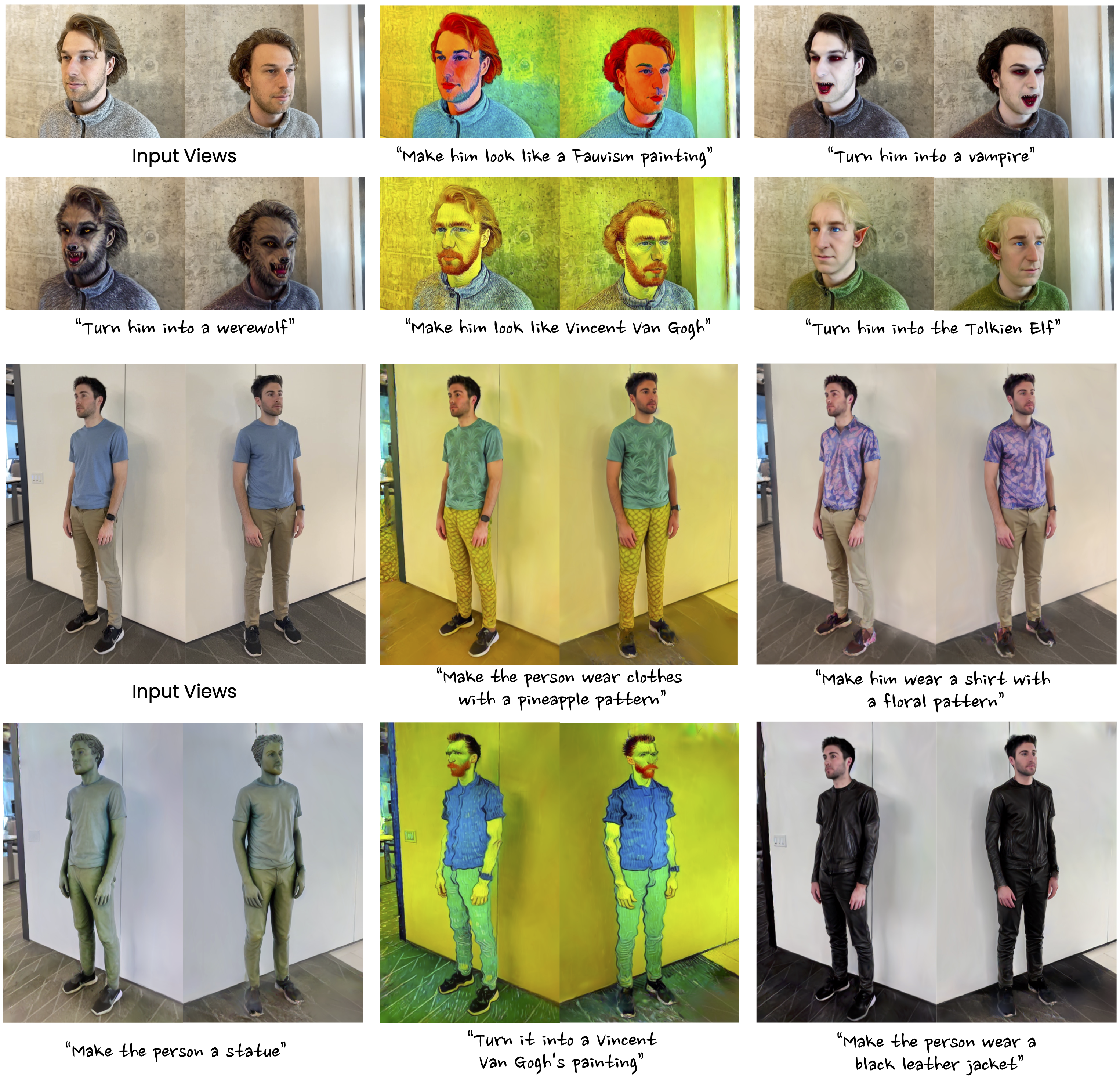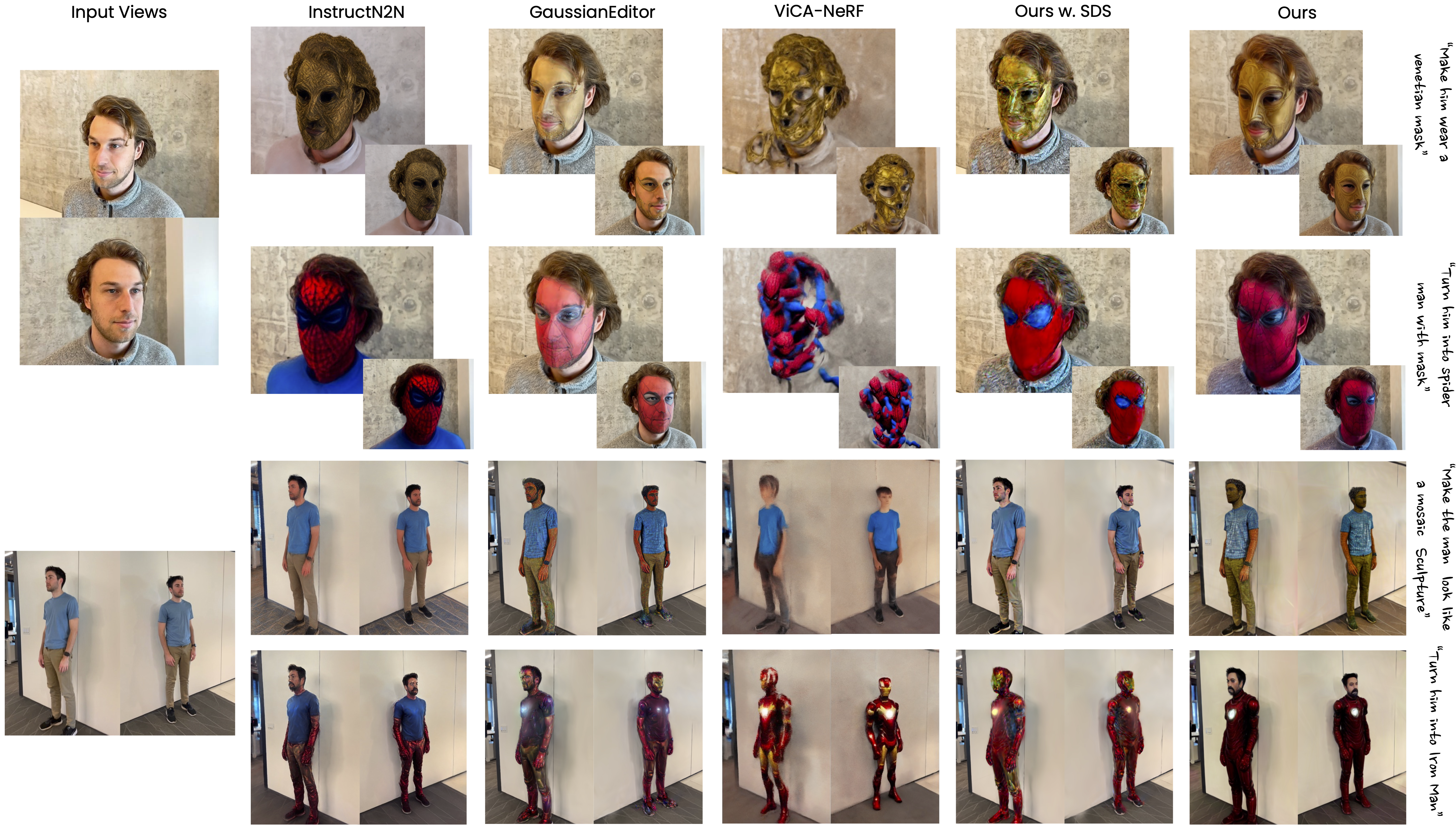DGE: Direct Gaussian 3D Editing by Consistent Multi-view Editing


We consider the problem of editing 3D objects and scenes based on open-ended language instructions. The established paradigm to solve this problem is to use a 2D image generator or editor to guide the 3D editing process. However, this is often slow as it requires do update a computationally expensive 3D representations such as a neural radiance field, and to do so by using contradictory guidance from a 2D model which is inherently not multi-view consistent. We thus introduce the Direct Gaussian Editor (DGE), a method that addresses these issues in two ways. First, we modify a given high-quality image editor like InstructPix2Pix to be multi-view consistent. We do so by utilizing a training-free approach which integrates cues from the underlying 3D geometry of the scene. Second, given a multi-view consistent edited sequence of images of the object, we directly and efficiently optimize the 3D object representation, which is based on 3D Gaussian Splatting. Because it does not require to apply edits incrementally and iteratively, DGE is significantly more efficient than existing approaches, and comes with other perks such as allowing selective editing of parts.
First, we modify a given high-quality image editor like InstructPix2Pix to be multi-view consistent. We do so by utilizing a training-free approach which integrates cues from the underlying 3D geometry of the scene. Second, given a multi-view consistent edited sequence of images of the object, we directly and efficiently optimize the 3D object representation, which is based on 3D Gaussian Splatting.

We provide qualitative comparison with other 3D editing methods.

We provide some editing results with our method for partial scene editing.
@article{chen2024dge,
title={DGE: Direct Gaussian 3D Editing by Consistent Multi-view Editing},
author={Minghao Chen and Iro Laina and Andrea Vedaldi},
journal={arXiv preprint arXiv:2404.18929},
year={2024}
}This research is supported by ERC-CoG UNION 101001212. Iro Laina is also partially supported by the VisualAI EPSRC grant (EP/T028572/1).